
How Many Internal Links Per Page SEO? - Suffari
Internal links help Google and other search engines crawl your website, tell them which pages are most important, and tell both the reader and search engines what each page is about through the use of anchor texts (text with a hyperlink). So, what's the magic number of internal links you need to add to each page? Well, it's not as simple as that. But, the SEO experts at Suffari will walk you through the best practices so you can learn how many internal links per page to add.
Table of Contents
How Many Internal Links Per Page SEO? - Suffari
How Many Internal Links Per Page should you do for the best SEO results?
Understanding Internal Linking and Its Significance
The Role of Internal Links in SEO
Benefits of Proper Internal Linking
Optimal Number of Internal Links per Page
General Guidelines for Internal Link Counts
Factors Influencing the Number of Internal Links
Recommended Internal Link Ratios Based on Page Type
Best Practices for Internal Linking Strategy
Ensuring Relevance and Context
Avoid Overlinking and Underlinking
Using Descriptive Anchor Text Effectively
Prioritizing Key Content Pages
Avoiding Excessive Linking and Dilution of Page Authority
Case Studies and Industry Benchmarks
Technical Considerations for Internal Linking
Site Architecture and Navigation
Implementing NoFollow and DoFollow Links
Optimizing for Crawl Budget and Indexation
Tools and Methods to Analyze Internal Link Quantity
Manual Tracking and Management
How Many Internal Links Per Page should you do for the best SEO results?
The optimal number of internal links depend on the page and can range from just a few to over 100. To better understand internal links, how to implement them, and how many to put on each page, read our guide on how many internal links to add per page for SEO.
Understanding Internal Linking and Its Significance
Understanding internal linking is essential for optimizing your website's SEO and enhancing user experience. Internal links help search engines crawl and index your site more effectively while guiding visitors to related content, increasing engagement and reducing bounce rates. Properly managing the number of internal links per page ensures a balanced structure that supports your overall SEO strategy.
Definition of Internal Links
Internal links are hyperlinks that connect one page of a website to another within the same domain. They play a crucial role in guiding visitors through your website and helping search engines understand the structure and hierarchy of your content. Proper internal linking enhances user experience by making navigation easier and ensures that important pages receive the link equity needed for better ranking.
The Role of Internal Links in SEO
Understanding internal linking is essential for effective SEO as it helps distribute link equity across your website and improves user navigation. Internal links connect different pages within your site, guiding visitors to relevant content and making it easier for search engines to crawl and index your pages.
The significance of internal links in SEO lies in their ability to establish a clear site structure, highlight important pages, and improve keyword relevance. Proper internal linking ensures that valuable pages receive more visibility and authority, which can positively impact search engine rankings.
When considering how many internal links per page for SEO, it's important to strike a balance. Too many links can dilute link equity and overwhelm users, while too few may hinder navigation and indexing. Generally, including around 10 to 20 relevant internal links per page is recommended, ensuring each link adds value without cluttering the content.
Strategically placing internal links enhances both user experience and SEO performance. Focus on linking to cornerstone content, related articles, and important category pages to maximize the benefits of internal linking structure.

Benefits of Proper Internal Linking
Understanding internal linking and its significance is crucial for optimizing your website’s SEO. Internal links help search engines crawl your site more effectively, establish a clear site structure, and distribute link equity across pages. Proper internal linking ensures that important pages receive the attention they deserve and improves user navigation, leading to longer visit durations and lower bounce rates.
Enhanced Crawlability: Internal links guide search engines to discover and index all relevant pages on your website.
Improved Link Equity Distribution: Proper internal linking helps distribute authority from high-value pages to others, boosting overall SEO performance.
Better User Experience: Well-structured internal links make it easier for visitors to find related content, increasing engagement.
Increased Page Authority: Linking to important pages can elevate their ranking potential in search engine results.
Strategic Site Architecture: Organized internal links create a logical hierarchy, making your website easier to navigate both for users and search engines.
Regarding the optimal number of internal links per page for SEO, there is no fixed rule, but generally, maintaining a balance is key. Too many links can dilute link equity and overwhelm users, while too few may limit navigational benefits. A good practice is to focus on contextually relevant links that enhance user experience and support your SEO goals.

Optimal Number of Internal Links per Page
Determining the optimal number of internal links per page is a crucial aspect of SEO that can significantly impact website navigation and search engine rankings. Proper internal linking helps search engines understand the structure of your website, distribute link equity effectively, and improve user experience by making relevant content easily accessible. Finding the right balance ensures your pages are well-connected without overwhelming visitors or diluting link value.
General Guidelines for Internal Link Counts
Determining the optimal number of internal links per page is crucial for effective SEO, as it helps distribute link juice and improves site navigation without overwhelming users or search engines.
Maintain a balance: Aim for 3 to 10 internal links per page to ensure each link has enough value without cluttering the content.
Prioritize relevance: Only include internal links that are contextually related to the current content to enhance user experience and SEO impact.
Avoid excessive linking: Too many links can dilute link equity and reduce the effectiveness of each link, so be selective.
Use descriptive anchor text: Ensure that links have clear, relevant anchor texts to improve both user understanding and search engine crawling.
Structure logically: Link to important pages like categories, main sections, or related articles to build a strong internal hierarchy.
Factors Influencing the Number of Internal Links
The optimal number of internal links per page for SEO depends on various factors, including the size and structure of the website, the importance of the page, and user experience considerations. Generally, a balanced approach is recommended to ensure that search engines can effectively crawl the site without overwhelming users with excessive links.
Factors influencing the number of internal links include the overall website hierarchy, the relevance of linked pages, and the goal of guiding visitors toward important content. Well-structured sites typically feature more internal links on key pages to distribute link equity and improve navigation.
Additionally, the quality of internal links matters more than quantity. It's important to focus on linking to relevant, high-value pages rather than adding numerous links indiscriminately. This enhances both SEO performance and user experience by providing meaningful pathways through your content.
In practice, maintaining a reasonable number of internal links—generally between 100 and 300 per page—is advisable, but this can vary based on specific site requirements. Regularly auditing internal links helps ensure they remain effective and aligned with SEO best practices.
Recommended Internal Link Ratios Based on Page Type
The optimal number of internal links per page is a crucial factor in SEO, as it helps distribute link equity effectively and guides visitors to important content. While there is no one-size-fits-all rule, understanding recommended internal link ratios based on page type can enhance site structure and search engine performance.
Homepage:
Your Homepage should typically contains 10-20 internal links, highlighting key sections like About Us, Services, Blog, and Contact. This helps establish authority and directs link equity to essential pages.
Category or Landing Pages:
Category or Landing Pages should include 15-30 internal links, linking to relevant subcategories or popular articles to improve navigation and crawlability.
Blog Posts or Content Pages:
Blog Posts or Content Pages should generally have 5-10 internal links, pointing to related articles or important product/service pages to keep users engaged and distribute link juice.
Product or Service Pages:
Product or Service Pages are recommended to have 3-8 internal links, primarily focusing on related products, accessories, or pertinent informational pages to support conversions.

Best Practices for Internal Linking Strategy
Developing an effective internal linking strategy is essential for enhancing your website’s SEO performance. Proper internal links help search engines understand the structure of your site, distribute page authority, and improve user navigation. Balancing the number of internal links per page ensures that each link adds value without overwhelming users or diluting link equity, making it a crucial aspect of optimizing your site for better search engine rankings.
Ensuring Relevance and Context
Implementing an effective internal linking strategy is essential for SEO success, especially when considering how many internal links to include per page. To ensure relevance and context, it is important to link to related content that naturally fits within the topic of the current page. This helps search engines understand the structure of your website and distributes link equity effectively. Avoid excessive linking, which can dilute the value of each link and confuse users; instead, focus on quality over quantity by choosing anchor texts that clearly describe the linked page. Regularly audit your internal links to remove outdated or irrelevant connections and update them as your content expands. By prioritizing relevant, contextual links, you enhance user experience and improve your site's overall SEO performance.
Avoid Overlinking and Underlinking
Developing an effective internal linking strategy is crucial for SEO, as it helps distribute link equity and enhances site navigation. To optimize your internal links, aim for a balanced number that supports user experience without overwhelming the page. Typically, having around 3 to 10 internal links per page is considered optimal, depending on the content length and structure.
Avoid overlinking by not linking excessively to irrelevant pages or creating too many links that dilute the value of each. Overlinking can confuse users and harm SEO performance, making it difficult for search engines to prioritize important pages. Conversely, underlinking can hinder crawlability and prevent important pages from gaining visibility within your website.
To strike the right balance, focus on linking related and high-priority content naturally within your content. Use descriptive anchor text that clearly indicates the linked page's topic, and ensure that links are spread strategically throughout your site. Regularly audit your internal links to remove broken or outdated links and add new relevant links as your content grows. This approach ensures your internal linking remains effective, enhancing both user experience and search engine rankings.
Use Descriptive Anchor Text
Implementing an effective internal linking strategy is crucial for SEO, as it helps distribute link equity across your website and improves user navigation. Using descriptive anchor text enhances the clarity of links for both users and search engines, making it easier to understand the context of the linked pages. When considering how many internal links per page are ideal, it's important to strike a balance that maximizes SEO benefits without overwhelming the page or diluting link value.
Focus on relevant and contextually appropriate internal links to guide visitors naturally through your content.
Avoid excessive linking; generally, 20-50 internal links per page is a good range, but quality should always take precedence over quantity.
Use descriptive anchor text that clearly indicates the nature of the linked page, incorporating target keywords where appropriate.
Prioritize linking to key pages that support your SEO goals, such as product pages, category pages, or important blog posts.
Regularly audit your internal links to ensure they remain relevant and update them as your site evolves.
Using Descriptive Anchor Text Effectively
Effective internal linking practices are essential for improving website navigation, distributing link equity, and enhancing user experience. When considering how many internal links to include per page, it is important to strike a balance that maximizes SEO benefits without overwhelming the content or confusing visitors. Using descriptive anchor text plays a crucial role in this strategy, as it provides clear context about the linked page’s content, helping search engines understand the relationship between pages and guiding users seamlessly through your site. Instead of generic phrases like "click here," incorporate relevant keywords that accurately describe the destination page, thereby boosting keyword relevance and visibility. Overall, maintaining a strategic number of internal links—typically between 50 to 100 per page depending on content length—and employing descriptive anchor text ensures optimal site structure and improved search engine rankings.
Prioritizing Key Content Pages
Strategic internal linking is essential for optimizing website structure and improving user experience. Prioritizing key content pages ensures that these pages receive the necessary authority and visibility within your site. When determining how many internal links to include per page, it is important to balance providing enough pathways for visitors to find related content without overwhelming the main content or diluting link equity. Typically, focusing on a reasonable number of relevant links—often between 3 to 10—helps maintain clarity and effectiveness. Emphasizing links to high-priority pages can boost their search engine rankings and guide users towards valuable information seamlessly. Regularly auditing and updating your internal links promotes ongoing relevance and supports your overall SEO strategy.
Avoiding Excessive Linking and Dilution of Page Authority
Effective internal linking is essential for guiding users and search engines through your website, but it’s important to strike a balance to avoid diluting page authority. Generally, limiting the number of internal links on a single page to around 100 helps ensure that link equity is concentrated on the most important pages, rather than spreading thinly across too many links. Excessive linking can overwhelm visitors, reduce usability, and diminish the value of each link in terms of SEO. Prioritize high-quality, relevant internal links that provide meaningful navigation pathways and support the overall site hierarchy. By doing so, you enhance user experience and preserve the strength of your key pages, preventing dilution of page authority and maintaining a cohesive site structure.
Case Studies and Industry Benchmarks
The recommended number of internal links per page varies depending on the content size, website structure, and user experience goals. Generally, it is advised to include between 3 to 10 relevant internal links per page to ensure efficient site navigation without overwhelming users or diluting link equity. Well-placed internal links help search engines understand the site hierarchy, distribute link authority, and improve crawlability.
Case studies show that websites with a strategic internal linking structure tend to rank higher in search engine results and have better user engagement metrics. For example, an e-commerce site increased its sales by optimizing internal links within product categories, resulting in improved page authority and easier navigation for both users and search engines.
Industry benchmarks suggest that a balanced internal linking strategy supports SEO performance without over-optimization. Leading SEO tools recommend maintaining a natural link density, typically around 2-5% of the total number of words on a page, translating to roughly 3-10 internal links per page for most websites. Regular audits and strategic placement of links are essential to maximize their effectiveness.

Technical Considerations for Internal Linking
Effective internal linking is a crucial aspect of SEO that helps search engines understand the structure and hierarchy of your website. When considering the number of internal links per page, it is important to balance providing enough pathways for users and search engines without overwhelming the content. Proper technical considerations ensure that internal links enhance site navigation, distribute link equity efficiently, and improve overall indexing performance.
Site Architecture and Navigation
When optimizing for SEO, understanding the appropriate number of internal links per page is crucial for effective site architecture and navigation. Proper internal linking helps search engines crawl and index your website more efficiently while enhancing user experience by guiding visitors to relevant content. Striking a balance ensures that each page is well-connected without overwhelming users or diluting link equity. Generally, maintaining around 3 to 10 internal links per page is recommended to ensure each link holds value and relevance, but this can vary based on the size and complexity of the website. Additionally, organizing your site's structure logically—such as through clear hierarchies and breadcrumb navigation—supports both usability and SEO efforts. Prioritizing contextually relevant links and avoiding excessive linking prevents dilution of link authority and maintains clarity for both users and search engines.
Implementing NoFollow and DoFollow Links
When optimizing a webpage for SEO, it's essential to consider the technical aspects of internal linking, including how to implement nofollow and dofollow links effectively. Proper internal link structure can enhance user navigation and distribute link equity across your site, but overdoing or mismanaging these links can negatively impact your SEO performance.
Evaluate the relevance and importance of each internal link to ensure they support your content hierarchy and user experience.
Use dofollow links strategically to pass link equity to key pages that contribute to your SEO goals.
Implement nofollow links for pages or links you want to exclude from passing authority, such as login pages or user-generated content.
Maintain a balanced number of internal links per page; excessive linking can dilute link equity and overwhelm users.
Regularly audit your internal links to identify broken or outdated links and update or remove them accordingly.
Ensure that your internal linking structure aligns with your overall SEO strategy and keyword targeting.
In terms of the optimal number of internal links per page, there is no strict rule, but generally, keeping it between 50 and 100 links ensures a healthy balance. Focus on quality and relevance over quantity, and use nofollow attributes where appropriate to control link juice flow and prevent spammy or unnecessary links from affecting your site's SEO.
Optimizing for Crawl Budget and Indexation
When optimizing the number of internal links per page for SEO, it is essential to consider technical factors that influence crawl budget and indexation. Proper internal linking helps search engines discover and understand the structure of your site efficiently, but excessive links can dilute link equity and hinder crawling efficiency.
To optimize your internal linking strategy, ensure that each page contains a balanced number of relevant links, typically between 50 and 100 depending on the page's content and authority. Avoid overloading pages with too many links, as this may cause crawlers to spend less time on important pages or miss indexing key content.
Ensure that internal links follow a logical hierarchy, guiding crawlers from high-authority pages to newer or less-visited ones. Use descriptive anchor texts that clearly indicate the linked page's relevance, aiding both users and search engines in understanding the content relationship.
Implement a clean URL structure and avoid deep linking into obscure or orphan pages to improve crawl efficiency. Regularly audit internal links to remove broken or outdated links, which can negatively impact crawlability and user experience.
By carefully managing the quantity and quality of internal links per page, you can effectively optimize your crawl budget and enhance indexation, leading to better SEO performance without overwhelming search engine crawlers.

Tools and Methods to Analyze Internal Link Quantity
Understanding the quantity of internal links on a webpage is essential for effective SEO strategies. Tools and methods to analyze internal link quantity help webmasters identify opportunities for optimizing site structure and improving user navigation. By leveraging these techniques, you can ensure that each page is appropriately linked, enhancing search engine crawlability and overall site performance.
Using SEO Audit Tools
Analyzing the quantity of internal links on a webpage is crucial for effective SEO, as it helps distribute link equity and improve site navigation. SEO audit tools offer a variety of methods to assess internal link structures efficiently. These tools typically scan website pages to generate detailed reports on internal linking patterns, including total link counts per page, link distribution, and anchor text analysis.
Popular SEO audit tools such as Screaming Frog SEO Spider, Ahrefs, SEMrush, and Moz Pro provide comprehensive features for internal link analysis. Screaming Frog, for example, allows users to crawl websites and export data on internal links, making it easy to identify pages with too few or too many links. Similarly, Ahrefs' Site Audit tool offers insights into internal link distribution and highlights issues related to orphan pages or over-linked pages.
Methods used by these tools include automated crawling, which maps all internal links within a site, and visualization of link structures to identify potential bottlenecks or gaps. Some tools also analyze anchor text diversity and relevance, ensuring that internal links are optimized for SEO. Additionally, many tools allow custom filtering and reporting, enabling users to focus on specific sections of their website or particular link patterns.
By leveraging these tools and methods, webmasters can fine-tune their internal linking strategy, ensure an optimal number of links per page, and enhance overall SEO performance. Regular audits utilizing SEO tools help maintain a healthy internal link structure aligned with best practices, ultimately improving site authority and user experience.
Manual Tracking and Management
Analyzing the quantity of internal links on a webpage is essential for effective SEO, helping to improve site navigation and distribute link equity properly. Tools such as Screaming Frog SEO Spider and Ahrefs allow users to crawl websites and generate detailed reports on internal link structures, including the number of links per page. Manual tracking involves inspecting individual pages through browser developer tools or site audits to identify internal link distribution and ensure no pages are overly or under-linked. Managing internal links effectively requires regular audits, which can be facilitated by spreadsheets or specialized SEO software to monitor link counts, optimize anchor text, and maintain a balanced internal linking strategy that supports both user experience and search engine crawling.
Monitoring Internal Link Performance
Analyzing internal link quantity and monitoring their performance are essential steps in optimizing SEO for each page. Tools such as Google Search Console provide valuable insights into internal link structures and how they influence search rankings. Additionally, specialized SEO tools like Ahrefs, SEMrush, and Screaming Frog can crawl websites to evaluate internal link counts, identify orphan pages, and assess the distribution of links across site content. These tools also allow for monitoring link performance by tracking click-through rates, anchor text effectiveness, and page authority flow. Methods include conducting comprehensive site audits to ensure optimal internal linking strategies, analyzing anchor text diversity, and examining user engagement metrics to gauge how internal links facilitate navigation and improve user experience. Regular monitoring helps detect issues such as broken links or over-optimization, enabling continuous improvements to enhance SEO performance and page ranking.
Wrapping up Internal Linking
Effective internal linking is a crucial aspect of website architecture that enhances user navigation and boosts search engine optimization. Implementing strategic internal link practices ensures that important pages are easily discoverable and that link equity flows seamlessly throughout the site. In this article, we will explore the optimal number of internal links per page to maximize both user experience and SEO performance.
Let Suffari handle your Website Maintenance and Onsite SEO
Effective internal linking is a crucial aspect of SEO that can significantly enhance a website's search engine rankings and user experience. Suffari's website management service includes onsite SEO at not additional cost. We help businesses optimize their internal link structure by ensuring the right balance of links per page. Generally, having around 3 to 5 internal links per page is recommended to distribute link equity evenly without overwhelming visitors or diluting link value. Proper internal linking not only improves navigation but also helps search engines understand the site hierarchy and prioritize important pages. Suffari provides expert guidance to determine the optimal number of internal links tailored to each website's content and goals, ensuring maximum SEO benefits and a seamless user journey.







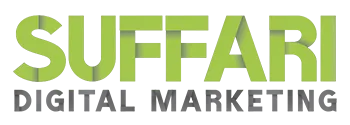




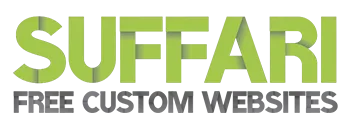



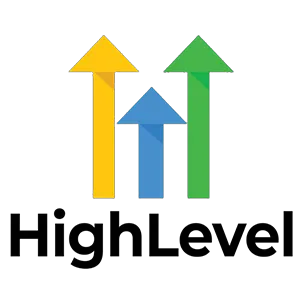

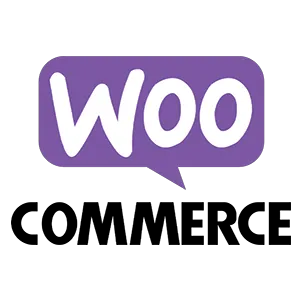


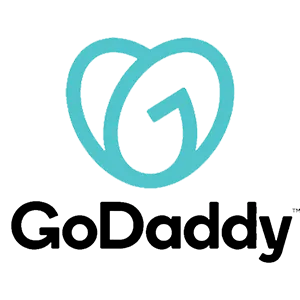

Youtube